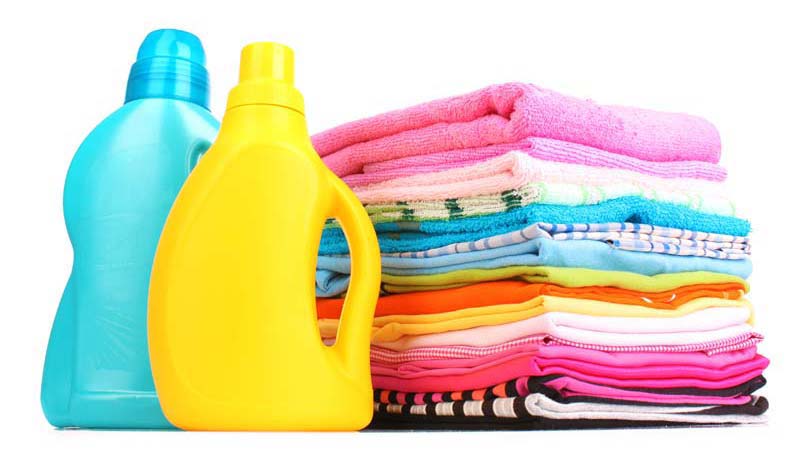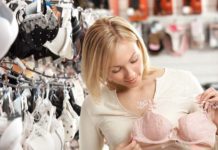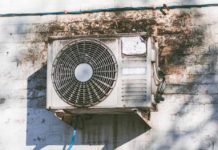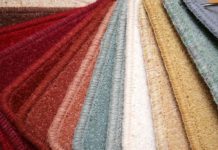
When it comes to brand loyalty – consumers are often more committed to their laundry soap brand than they are to their spouses. In surveys, most women acknowledge that they purchase laundry soap based on the sniff test alone. They wash their clothes in some incredibly scented vanilla lavender mixture and they are sold. Men on the other hand, are looking at the price tags when they buy laundry detergent. And by do those price tags differ from brand to brand. In US stores lesser brands such as Purex or Arm and Hammer can be found for less than $5 for 26 – 32 load sizes while more expensive brands like Tide, Gain or Cheer can cost triple that amount.
Basically, the question needs to come back to whether the more expensive laundry soaps have a superiority complex or not. Are the clothes washed in them actually cleaner, or are the tantalizing scents just ammunition to shoot down any chance that fragrant hungry moms will switch. For the answer, its time to check out a little consumer report information.
In Consumer Reports magazine, when laundry soaps were put head to head, the first thing compared was price. Not to mention names, but the “tidal” wave of cost efficiency definitely went to the no name brands. The difference per load ranged from .08 cents to .36 cents. This has to make you wonder whether an 8 cent per load laundry soap is really capable of getting your clothes clean. The result was pretty conclusive that the well known more expensive brand did have a higher percentage of cleaning agent in their make-up. Tide for instance was the only detergent that showed exemplary capabilities of pre-treating, stain removal, and leaving behind wash-to-wash freshness. And, the less expensive brands with less cleaning agent – while they worked, consumers had to use more of the product to get the same amount of clean. Essentially this equates to a 26 load cheap bottle of laundry detergent really on washing 12 loads of laundry.
In a world where we expect more from our purchases than ever before, even laundry soap has not been left out of the loop. Today there are laundry detergents that claim to be everything from environmentally friendly to having super powers that reduce the need for ironing clothes. Others have “technology” that enhances the wash-to-wash freshness (that warm and fuzzy smell that drives women crazy) and others plan to be 100% natural. Each of these specialty products seems to have a consumer base all of their own. If you are interested in preserving the environment and ‘going green’ chances are you wont budge from your Seventh Generation cleaning products.
The other thing that a consumer must consider however is the capabilities of their washing machine. The new laundry soaps are designed to bubble less thus protecting the life of your front-end high efficiency washer. Less bubbles doesn’t necessarily mean less detergent – just less of the bubbling agent. Most consumers do report that the hE products seem to pack a lesser punch when it comes to that long lasting smell. However, washing machine manufacturers agree and endorse these products and assert that they do help keep your laundry machine working longer. While a tad more expensive, it may be worth saving on replacement or repair costs down the road. Today, even the little guys of the laundry world are making high efficiency detergents. Since they are safer to the environment, make septic tanks more efficient – it’s a wonder that the less bubbly version don’t just become the only ones available on the market.
Picking out laundry soap is a very personal decision. You might be able to tell a lot about a person just by seeing what they choose. Do they have Tide or the store brand in their buggy? What consumers need to watch are those fancy brands that come out made for individual stores. Many of these, such as the pricey Martha Stewart laundry detergent performed poorly in research and included very low amounts of actual detergent agents. Perhaps consumers need to demand that laundry detergent companies start coming off the cuff with their labeling like the food industry has had to do.
For laundry enthusiasts (which there are many) a back to basics return to what works may be in order. For decades, Fels-Naptha soap by Dial has been the highest selling laundry soap. Today, there are plenty of people who still utilize this product to make homemade laundry detergents. The bar laundry soaps prove to be most effective at removing stains like grease or grass and recipes for making a liquid version are as easy as adding borax. Not to mention, this versatile soap can be used as catfish bait and as a treatment for poison ivy. You can also use it for a garden fertilizer and even more convenient is that fact that it is great for insect control. This makes washing your clothes in Fels-Naptha before your next outdoor adventure seem like a brilliant idea. It actually smells pretty good and a little of the product goes a long way. Just don’t expect bubble or lather- this soap is pure cleaning agents. If you are looking for it, it will be in with the hand soaps at your local department store or in hardware stores.
Laundry soap is definitely here to stay. For most people, they will purchase plenty of other products to help them remove difficult stains, but stick to one product when it comes to how their clothes feel and smell. If you are interested in shopping around for detergent, you should visit the website of every brand you wish to try. Not only will you find plenty of coupons, but the market is so competitive that most offer a free trial size of the product just to see if you like it. Sign up for emails and you will get monthly coupons for the laundry soap as well.





